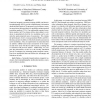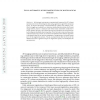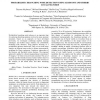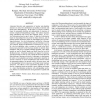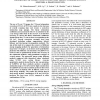ISBI
2008
IEEE
14 years 6 months ago
2008
IEEE
Fluorescent microscopy of biological samples allows noninvasive screening of specific molecular events in-situ. This approach is useful for investigating intricate signalling path...
ISBI
2008
IEEE
14 years 6 months ago
2008
IEEE
ISBI
2008
IEEE
14 years 6 months ago
2008
IEEE
Functional magnetic resonance imaging (fMRI) and electroencephalography (EEG) provide complementary information about the brain function. We propose a novel scheme to examine asso...
ISBI
2008
IEEE
14 years 6 months ago
2008
IEEE
ISBI
2008
IEEE
14 years 6 months ago
2008
IEEE
In this paper, we propose a computational framework for 3D volume reconstruction from 2D histological slices using registration algorithms in feature space. To improve the quality ...
ISBI
2008
IEEE
14 years 6 months ago
2008
IEEE
Neurobiologists are collecting large amounts of electron microscopy image data to gain a better understanding of neuron organization in the central nervous system. Image analysis ...
ISBI
2008
IEEE
14 years 6 months ago
2008
IEEE
In fluorescence-labelled cell assays for high content screening applications, image processing software is necessary to have automatic algorithms for segmenting the cells individ...
ISBI
2008
IEEE
14 years 6 months ago
2008
IEEE
ISBI
2008
IEEE
14 years 6 months ago
2008
IEEE
Automated detection and segmentation of nuclear and glandular structures is critical for classification and grading of prostate and breast cancer histopathology. In this paper, w...
ISBI
2008
IEEE
14 years 6 months ago
2008
IEEE
The use of X-ray CT images for CT-based attenuation correction (CTAC) of PET data results in the decrease of overall scanning time and creates a noise-free attenuation map (μmap)...

